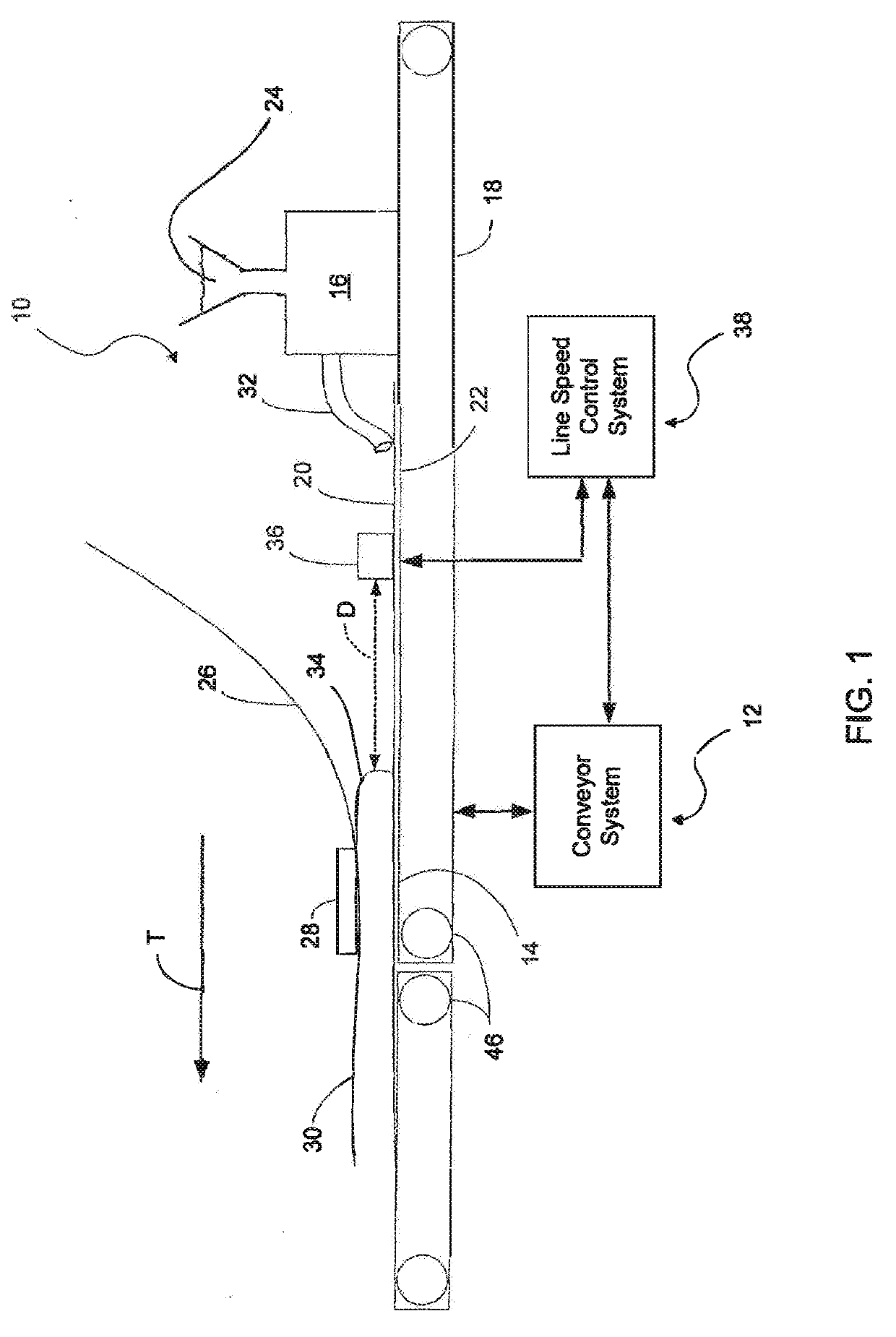Systems and methods for controlling a conveyor system during product changeovers
a conveyor system and product change technology, applied in the field of system and method for preparing cement or gypsum products, can solve the problems of uneven accumulation, frequent clogging of the forming plate in the production line, and inability to maintain a generally laminar flow of slurry before the forming plate, so as to reduce or eliminate the overshoot, preserve the structural integrity of the wallboard, and reduce the amount of wallboard waste during the heat treatment of the board
- Summary
- Abstract
- Description
- Claims
- Application Information
AI Technical Summary
Benefits of technology
Problems solved by technology
Method used
Image
Examples
Embodiment Construction
[0024]Referring now to FIG. 1, the present control system is generally designated 10, and is designed to control a line speed of a conveyor system, generally designated 12, in a wallboard production line 14. A mixer 16 configured for mixing and dispending a slurry is disposed above the production line 14 that includes a conveyor table 18 upon which a web of face paper 20 is moved on a conveyor belt 22 in a direction of travel designated by the arrow T. A supply of stucco 24 having various ingredients is delivered to the mixing for deposition upon the face paper 20 located on the conveyer belt 22.
[0025]While a variety of settable slurries are contemplated, the present control system 10 is particularly designed for producing stucco / gypsum panels. In many applications, the slurry is formulated to include varying amounts of gypsum, aggregate, water, accelerators, plasticizers, foaming agents, fillers, cement, and / or other ingredients well known in the art. The relative amounts of these ...
PUM
| Property | Measurement | Unit |
|---|---|---|
| distance | aaaaa | aaaaa |
| speed | aaaaa | aaaaa |
| mass rate | aaaaa | aaaaa |
Abstract
Description
Claims
Application Information
 Login to View More
Login to View More - R&D
- Intellectual Property
- Life Sciences
- Materials
- Tech Scout
- Unparalleled Data Quality
- Higher Quality Content
- 60% Fewer Hallucinations
Browse by: Latest US Patents, China's latest patents, Technical Efficacy Thesaurus, Application Domain, Technology Topic, Popular Technical Reports.
© 2025 PatSnap. All rights reserved.Legal|Privacy policy|Modern Slavery Act Transparency Statement|Sitemap|About US| Contact US: help@patsnap.com



